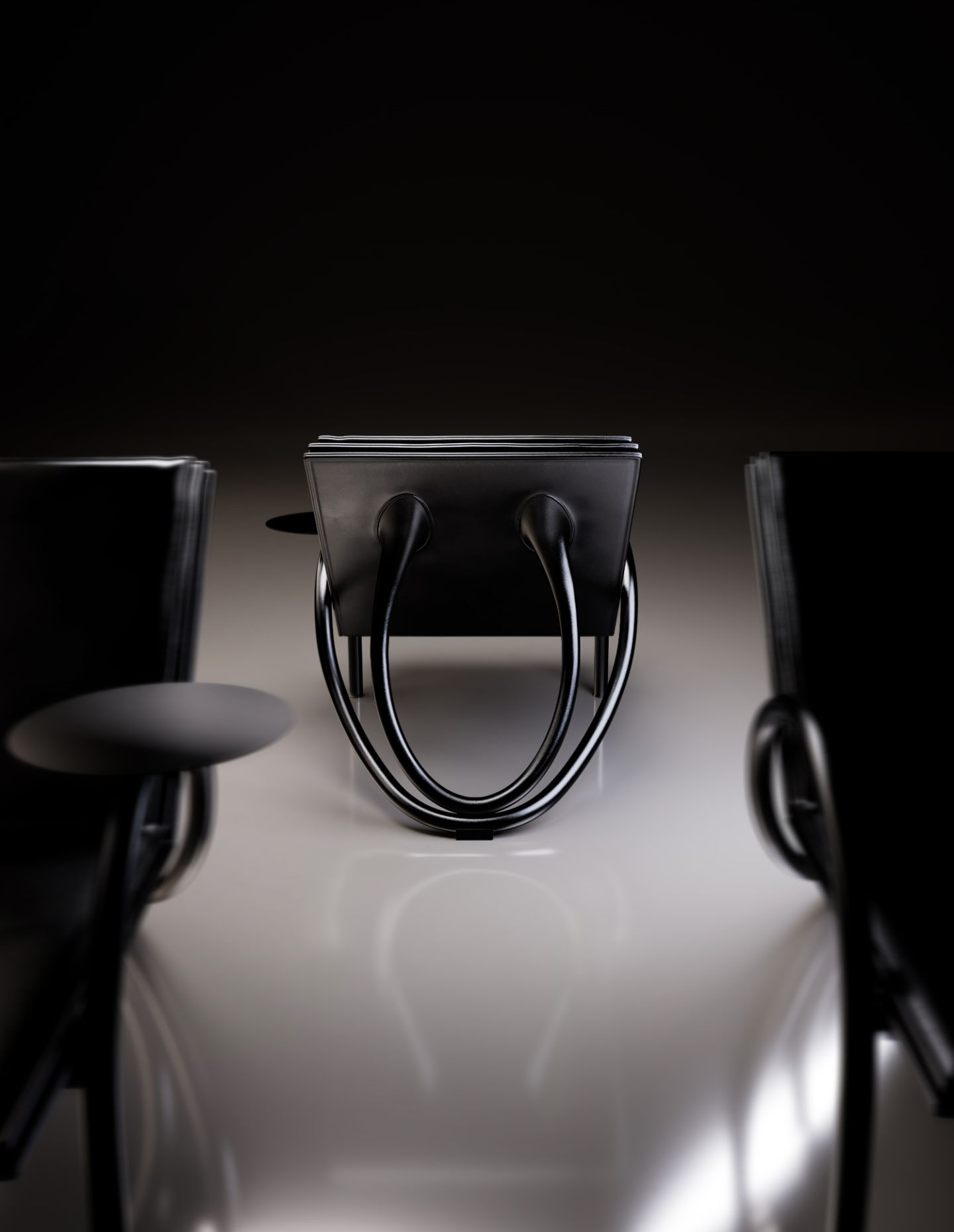It is a common propensity for architects to apply their expertise to alternative creative pursuits. Le Corbusier had his chairs; Thierry Mugler had his dresses. And while some may see a vacillation between creative fields, others will argue that it positions the designers with fresh fervour and a richer perspective. On top of that, it is a rarity to find someone willing to step outside the zeitgeist and create something more than pastiche. So, when I came across Elyza Veta on Instagram during a monotonous and brusque scroll through my ‘tailored’ reels, she caught my attention. There her digital oeuvre was, sequestered between meaningless content – how had we not heard of her?
An artist and designer who goes by the handle @vetaelyza on Instagram, she describes her portfolio as “envisioning the intangible,” drafting renders and digital furnishings inspired by high-end fashion houses. Lauded sartorial trends – namely the Miu Miu slingbacks and Maison Margiela Tabi boots – are transformed into digital chairs. Maybe it’s over-excitement, but I would go as far as to say: the renders have left such an impression that I wouldn’t be shocked to see a collaboration between Veta and a fashion powerhouse in the near future – I’m looking at you, marketing geniuses at Jacquemus – and I will sit back proudly on that statement when it happens.

Let’s start from the beginning. Talk us through your career trajectory – how did you come to find designing digital renders?
Elyza: I grew up in a traditional post-Soviet household in Ukraine, where innovative design was non-existent, and I instinctively felt its absence. I began taking art lessons at six and became passionate about design-build by nine after discovering renovation TV shows. When I moved to New York later on and had to choose a college major, I went with interior design – it sounded like both a practical and creative choice. After graduation, I worked in commercial design-build and got to see the construction side of interiors, witnessing how everything was made, from the digital drawings I created to the real-life spaces.
Eventually, functionality and buildability became the biggest priorities, rendering the artistic side of design somewhat irrelevant. I needed more creative freedom and became enamoured with bespoke design and furniture objects. I wanted to design my own furnishings instead of just sourcing them, but I wasn’t sure where to start; luckily, that’s where digitised design came in. 3D art was also on the rise amid the NFT frenzy. I decided to combine both and began making visuals of my virtual furniture and posting them online.

What sparked the idea to blend sartorial design with interior elements, and how do you approach translating these tactile garments into functional digital objects?
I’ve always been fascinated by interdisciplinary creative practices as a way of breaking down the constraints of traditional design. Having lived in New York for the past decade, the exposure to fashion, visual art, interiors and architecture simultaneously became inevitable for me. As I was looking for a fresh way of designing objects, I realised that drawing inspiration from already existing furnishings felt repetitive, so I decided to look into fashion as a source of new ideas since these industries have a long-standing history of inspiring one another. Footwear, in particular, became a prominent source of inspiration for me, due to its construction and visual resemblance to seating. When I stumbled upon the iconic red Miu Miu heels, the buckle trio detail caught my eye, and I decided to incorporate that element into a chair. This was how the idea of designing fashion-inspired digital furniture began, along with my series of reels.
When translating high-end fashion trends into digital designs, how do you maintain a balance between paying homage to the original garments and infusing your own identity into the pieces?
I naturally gravitate towards garments and fashion accessories that resonate with my own design style, which makes the transition feel seamless to me. I always identify one central element that is most striking in a piece I’m referencing – for instance, if a handle detail stands out the most, I’ll make sure it’s visually prominent in its furniture equivalent as well. Afterwards, I adapt the object to suit my design language – I love playing with oversized elements, unusual textures and forms that feel unique and daring.

You’ve explored the digital medium in-depth. Do you ever envision translating your digital concepts into tangible pieces?
Absolutely. That’s my ideal next step. I’m currently navigating what the process of bridging the physical and digital realms could look like, and brainstorming some potential design ideas to bring to life.
How do you think digital software has advanced creative expression?
It has democratised creativity entirely. Since traditional materials and physical studio spaces are no longer prerequisites to creating, practising art is more accessible than ever. My favourite part is that digital design is unencumbered by the physical constraints of function. Taking furniture, for instance – something so intrinsically functional, and turning it into digital art is, to me, the ultimate expression of creative freedom.
What would be the next step in advancing your body of work? Any dream collaborations on your mind?
One of my biggest goals is to collaborate with Jacquemus. Working with the fashion world in general would be incredibly cool, and a great way to help establish furniture as an interdisciplinary art medium.




Next up: A poetic homage to beauty – both real and imagined – by CJ Hendry

